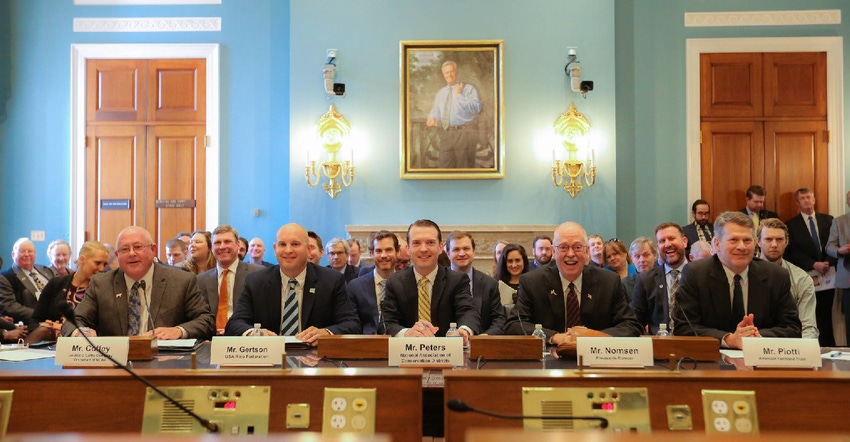Debate will deepen on role of working lands versus idle conservation programs and whether increasing CRP acres benefits production agriculture.

During a hearing Tuesday morning, the House Agriculture Committee dug deeper into how to tackle farm bill programs with a focus on conservation measures. Main messages of the hearing were a desire by some to increase Conservation Reserve Program (CRP) acres, while others expressed a desire to have more “boots on the ground” and use of working land programs.
In recent weeks, committee ranking member Rep. Collin Peterson (D., Minn.) has consistently called for an increase in CRP acres as a necessity for the next farm bill. The 2014 farm bill ended up setting a cap at 24 million acres; he’s calling for that level to increase to 40 million acres.
Peterson said he was opposed to the 24 million-acre cap in the last farm bill debate, but it was needed to protect the conservation baseline and offset other cuts in Title 2 of the bill. He’s advocating for making rental rates more affordable for the budget and more competitive so beginning farmers aren’t losing out on land to CRP.
Mr. David Nomsen, vice president of governmental affairs at Pheasants Forever, is calling for a complete re-evaluation and revamping of signups and finding ways to put larger tracts of grasslands into CRP. Pheasants Forever is supportive of increasing the CRP cap but also continues to support strong working lands programs such as the Environmental Quality Incentives Program.
Oklahoma cattle rancher Chuck Coffey, testifying on behalf of the National Cattlemen’s Beef Assn., made the case that Natural Resources Conservation Service (NRCS) personnel are a tremendous resource for ranchers. However, he said in recent years, it has become more difficult for NRCS staff to find time to get out of the office “due to the tremendous amounts of paperwork they are required to keep up with."
Coffey said ranchers must have well-informed NRCS personnel in order to move forward with innovative conservation practices. “They are our first go-to source of knowledge. It is critical we have ‘boots on the ground’ in conjunction with the voluntary programs offered,” he added.
During questioning, Coffey said if he had to choose between receiving cost-share payments or technical assistance from NRCS, he would choose technical assistance.
He added that if there were more boots on the ground for working lands programs, there may not need to be as much focus on idle conservation lands. “More funding to set-asides such as CRP may not be in the best interest of the taxpayer in this country,” Coffey challenged.
Nomsen noted that “what is good for the herd is good for the bird” and explained that CRP does have managed hay and grazing components that can be acted upon when needed.
About the Author(s)
You May Also Like



.png?width=300&auto=webp&quality=80&disable=upscale)

